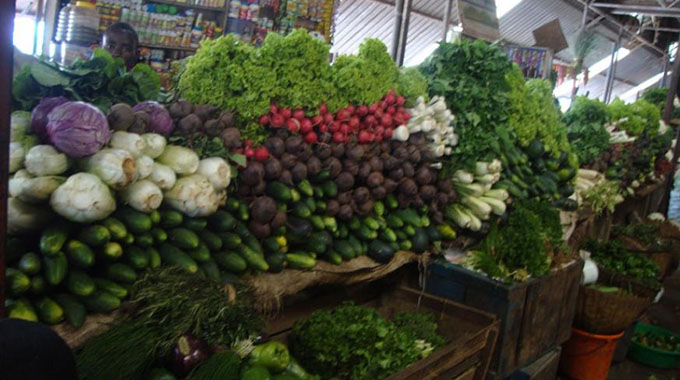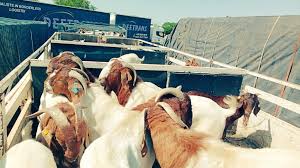Dealing with orf in goats and sheep
This week, we continue our exploration of common diseases affecting goats and sheep by focusing on one of the most contagious viral diseases, namely orf. What makes it particularly noteworthy is that it is zoonotic, meaning it can be transmitted from animals to humans, and therefore must be handled with great care.
This article focuses on the symptoms, prevention, and treatment of orf and provides practical advice for farmers on how to manage this disease. It also seeks to empower farmers with knowledge of how orf spreads, which enables them to take proactive measures to contain it, thereby maintaining the profitability by ensuring the health of their livestock.
Understanding Orf
Orf is a highly contagious viral disease that poses a significant challenge to sheep and goat farmers. It is known for causing painful sores on the mouths and noses of young animals, as well as on the teats of their nursing mothers.
While orf usually resolves on its own, it can cause discomfort and disrupt feeding, leading to weight loss and general weakness in affected animals. Moreover, orf can spread to humans if appropriate precautions are not taken.
Orf is caused by a virus from the Parapoxvirus family, which only affects the surface layers of the skin. The disease primarily occurs when the animal’s skin is already damaged, making it easier for the virus to infect and cause painful lesions.
Typically, young lambs and kids are most vulnerable to orf due to their immature immune systems and the natural abrasions that occur around their mouths when nursing.
Although orf is not usually life-threatening, it can lead to secondary bacterial infections, especially if the sores become contaminated.
The disease is self-limiting in most cases, meaning that the symptoms will eventually clear up on their own. However, the sores can last several weeks, during which time the animal may struggle to feed properly, causing further health complications.
Symptoms of orf
The first sign of orf is the appearance of wart-like sores on the animal’s lips, nose, and mouth. The wounds may initially appear as small, red spots, but they quickly develop into larger, crusty scabs. Infected animals may also exhibit symptoms such as reduced appetite due to the pain while eating, which can lead to weight loss in severe cases.
Young animals may show a reluctance to nurse, while nursing mothers can experience pain or discomfort, particularly if the sores are located on their teats.
Preventing the spread of orf
Preventing orf in a flock or herd requires farmers to take proactive measures to limit the spread of the virus. Since orf can easily pass from one animal to another through direct contact with infected wounds or contaminated surfaces, isolating affected animals is crucial.
Immediately quarantine infected animals from the rest of the herd as soon as orf is detected. One of the most effective ways to prevent orf outbreaks is to vaccinate lambs and kids after the lambing or kidding season.
Vaccination provides the animals with immunity, reducing the likelihood of infection and limiting the severity of symptoms if they do contract the virus.
Since orf can survive on surfaces like feeding troughs, bedding, and fences, it’s essential to regularly clean and disinfect areas where animals congregate. This helps to reduce the likelihood of the virus lingering in the environment and infecting healthy animals.
Farmers should always wear protective gloves when handling infected animals.
Proper hygiene, including washing hands thoroughly after handling animals, and cleaning equipment and feeding tools, is essential to preventing the spread of the disease.
Treating orf
As a viral disease, orf is incurable, but most infections resolve on their own. Treatment primarily focuses on managing the pain and discomfort caused by the sores and preventing secondary infections.
Farmers should spray the affected areas with iodine to disinfect the wounds and promote healing. Iodine has natural antiseptic properties that reduce the risk of bacterial infections.
In some cases, farmers may also use topical antibiotic paints, powders, or aerosols to further protect the sores from infection.
The thick, hard scabs that form as a result of orf can make it difficult for animals to eat, especially when the sores are located around the mouth. To alleviate their discomfort, farmers can apply lubricants such as petroleum jelly (Vaseline) or glycerine to soften the scabs. This makes it easier for the animals to feed and reduces the risk of malnutrition and weight loss.
Animals affected by orf may struggle to eat due to the pain caused by the wounds. Farmers should provide soft, easily digestible feed to ensure the animals maintain their nutrition during recovery.
A higher proportion of forage or softer grains should also be offered to sick animals to minimise the effort required for chewing and digesting the feed.
Whereas Orf itself is a viral infection, it can create an opportunity for bacteria to invade the open sores, leading to secondary infections. Farmers should regularly check the affected areas for signs of bacterial infection, such as increased swelling, discharge, or a foul smell.
If a secondary infection is suspected, antibiotics may be necessary to prevent the condition from worsening.
Human health concerns
Given that orf can be transmitted from animals to humans, farm workers who handle infected animals without proper protective equipment are at risk of developing painful sores on their hands, commonly referred to as “scabby mouth” or “contagious pustular dermatitis”.
Although orf in humans is generally not severe, the sores can be uncomfortable and may take several weeks to heal. To minimise the risk of contracting orf, individuals handling sheep and goats should wear gloves and protective clothing and wash their hands thoroughly with soap and water after contact with infected animals or contaminated equipment.
Long-term management and recovery
Once an animal has recovered from orf, it typically develops immunity to the virus, reducing the likelihood of future infections.
However, orf can still persist in a herd, as the virus can survive in the environment for extended periods. For this reason, ongoing vigilance is essential to prevent recurring outbreaks. Farmers should continue to monitor their herds for signs of orf, particularly during the lambing and kidding seasons when young animals are most vulnerable.
Conclusion
Orf is a common but manageable disease in goats and sheep, especially young animals. While it can cause discomfort and disrupt feeding, proactive measures like vaccination, isolation, and good hygiene can prevent its spread and protect the herd.
Farmers who act swiftly to treat affected animals and prevent secondary infections can minimise orf’s impact and ensure a speedy recovery for their livestock.
Sheuneni Kurasha is the managing director of Chivara Farm, a diversified farming operation, which specialises in stud breeding for small livestock (Boer goats, Kalahari Red goats, Savanna goats, dairy goats (Saanen and Toggenburg), Damara sheep and Meatmaster sheep) as well as Boran cattle. For feedback, kindly get in touch via email: kurashas@gmail.com; X: @chivarafarm or WhatsApp: +263 77 2874 523.-herald











